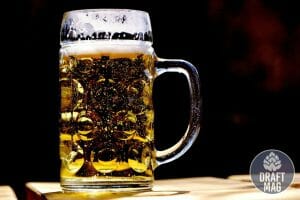Beer Belly: Causes, Signs and Top Tips To Get Rid of It
A beer belly is one of the most common occurrences among beer drinkers worldwide, especially older men.
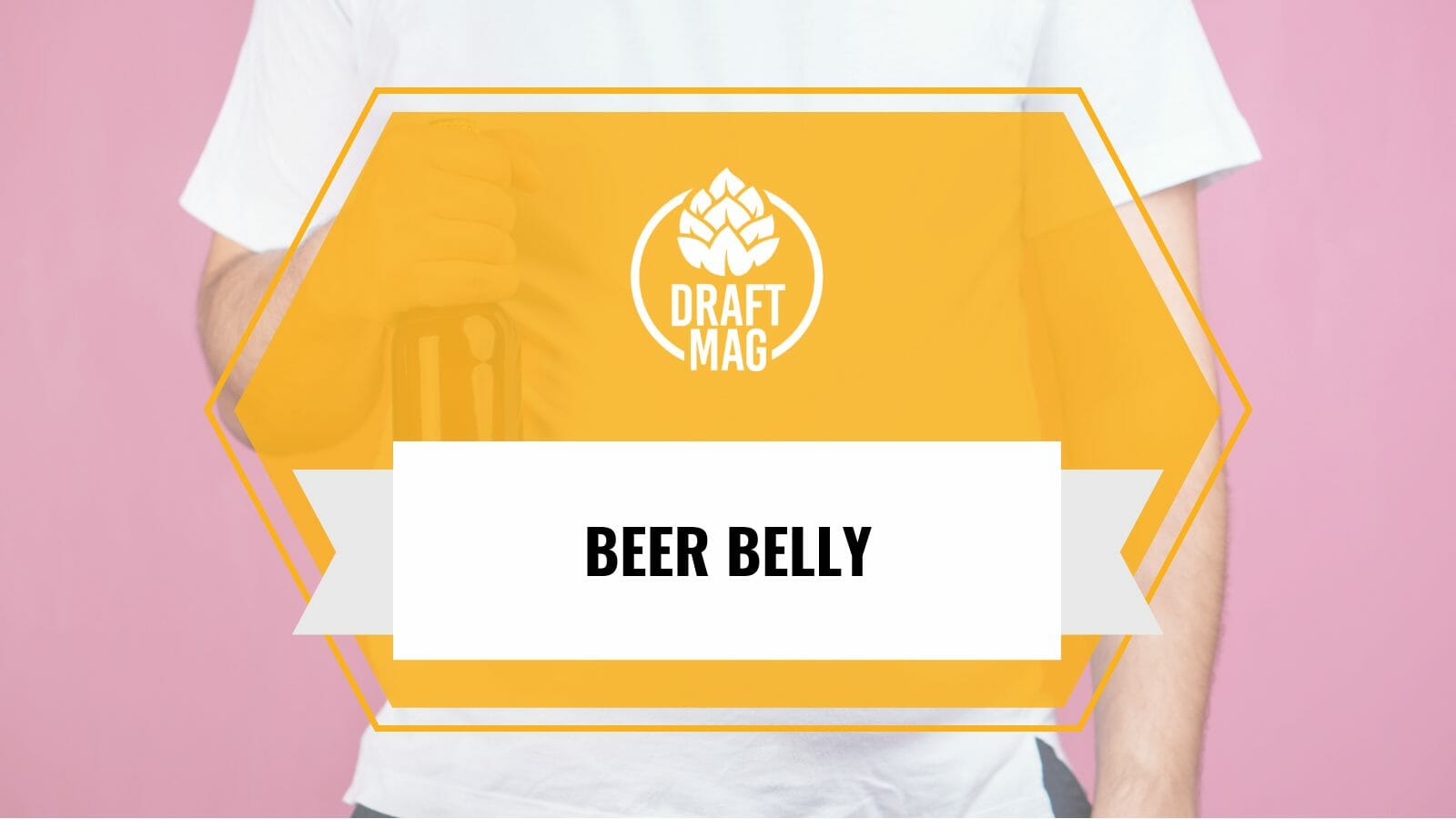
But is beer really the main cause of “beer belly,” or are there other causes to note? This complete guide will provide comprehensive information about beer belly including the causes and how to avoid it, so let’s get right into it!
What Does Beer Belly Mean?
A beer belly refers to fat deposits around the belly and waistline region which some people call belly fat, stomach fat or abdominal fat. It can come in the form of visceral fat – fat deposits around the body organs, or it can come as subcutaneous fat sitting under the skin.
– Hard Beer Belly
Some people tend to have beer bellies that feel hard and rigid. As a result, people may refer to this as a hard beer belly. It begs the issue of whether beer behaves differently depending on who is drinking it. This, however, is not the cause of your hard beer belly. A firm, bulging stomach indicates that you have an overabundance of visceral fat.
This fat, as previously said, surrounds the abdominal organs, resulting in greater fat deposits in the abdomen. When this fat accumulates, it causes your stomach to feel harder or tough when touched. The logic for this is that extra visceral fat differs significantly from typical body fat.
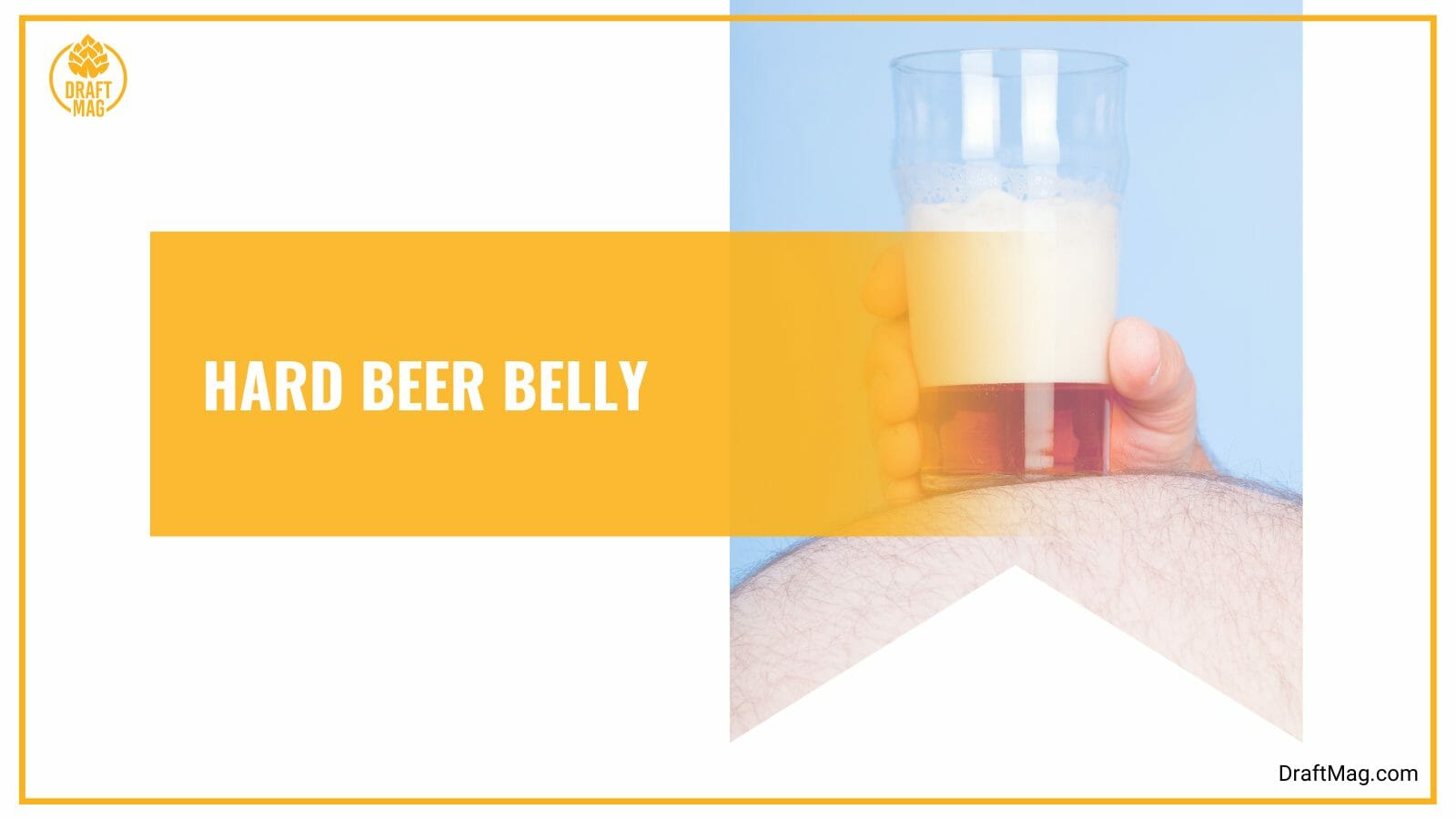
Because it does not lay under your skin’s surface, it does not feel mushy or soft on the exterior. Instead, it feels hard since it is located deep within your abdominal cavity. As your visceral fat deposits increase, your belly will eventually feel somewhat hard.
– Why It Happens
Consuming more calories than you burn will cause the excess to be stored as fat. Your age, gender, and hormone levels all influence where your body stores fat. Everybody typically begins with comparable fat storage patterns, but puberty alters this.
Women have much more subcutaneous fat than males; therefore, additional fat units tend to be stored in their thighs, arms, buttocks and tummies. Men store more fat in their stomachs because of the lesser amount of subcutaneous fat. Beer bellies are more common in elderly individuals since your calorie demands decrease as you age, you become less active, and gaining weight becomes simpler.
– Health Concerns
A beer belly may be associated with many health conditions. These include risks of diabetes, cardiovascular disease, asthma, dementia, and prostate and breast conditions. Some situations even lead to chronic health concerns. Therefore, it is essential to understand how to get rid of a beer belly quick or avoid it.
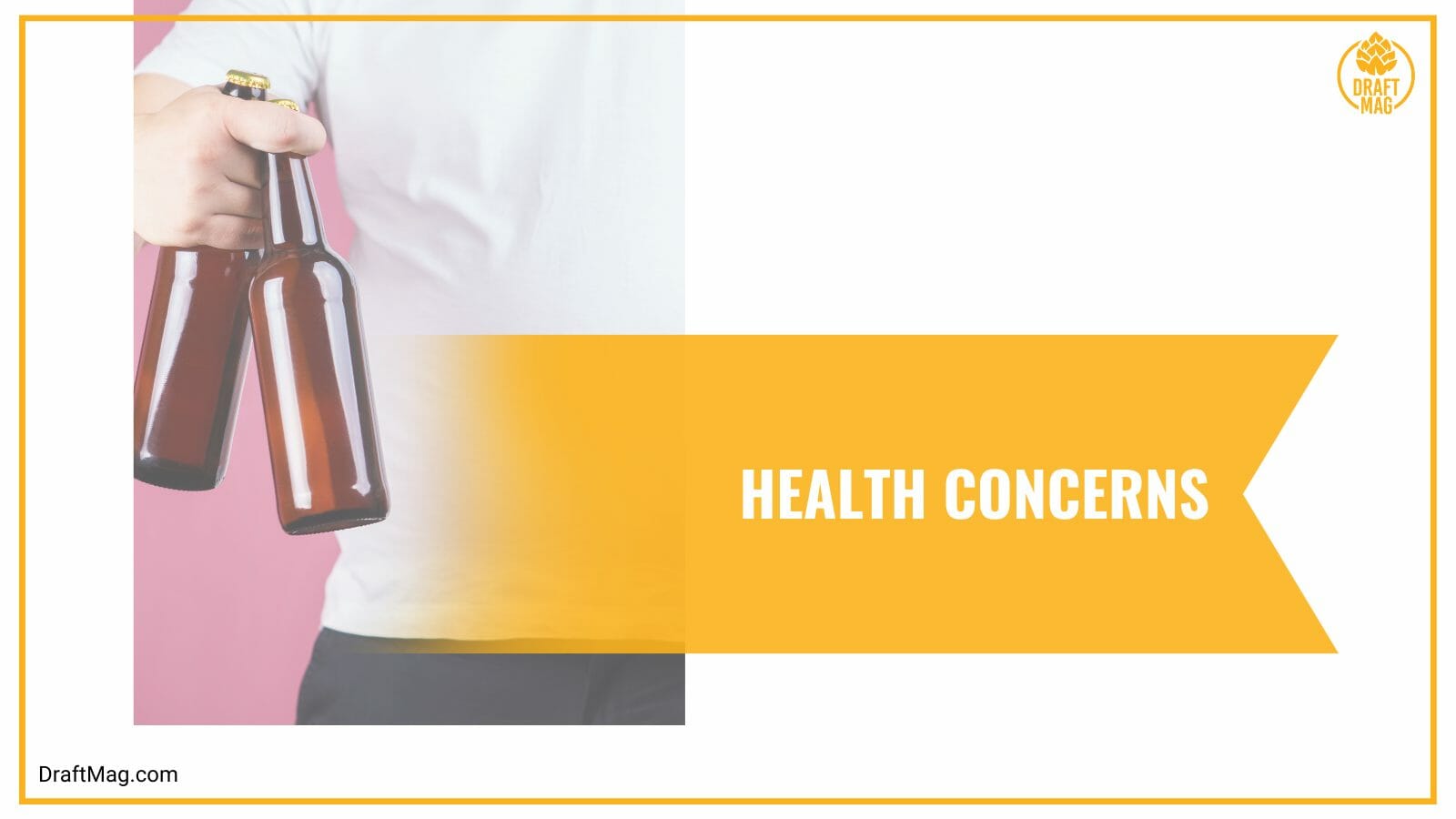
Carrying excess pounds in your belly is more dangerous than having them in your thighs or hips. Visceral fat wraps around the organs, causing an excess of tough fat which can cause serious health problems. Excess stomach fat and poor visceral health, in particular, can lead to metabolic syndrome, which is associated with a wide variety of health concerns. The term “metabolic” means the biochemical processes required to maintain the body’s functioning.
The more metabolic predisposing factor of a person, the more likely they will have a significant health problem. While various traits, illnesses, and behaviors can all contribute to metabolic syndrome, there are some significant risk factors for the disorder.
Metabolic syndrome can be diagnosed in anybody who has three of the following metabolic risk factors:
- A wider waistline: Those with extra stomach fat have a greater risk of getting heart diseases than those with fat mass in other locations.
- A low amount of HDL cholesterol: HDL cholesterol aids in the removal of cholesterol from the arteries. Having a low level of this helpful cholesterol can increase the risk of heart disease.
- High blood pressure: When blood pressure becomes too high, it can harm the heart or create plaque accumulation.
- High level of triglyceride: Triglycerides are fats found in the blood. When found in high levels, they can be harmful to heart health.
- Increased fasting blood sugar level: High fasting blood sugar levels might be an early indicator of diabetes.
People who fit the metabolic syndrome criteria may have some of the following:
- Coronary heart disease occurs when a waxy material (plaque) accumulates inside the arteries that feed blood to the heart.
 Excess plaque can cause the arteries to be hardened and constricted, reducing blood flow and causing cardiac disease.
Excess plaque can cause the arteries to be hardened and constricted, reducing blood flow and causing cardiac disease. - A reduced blood supply to the heart caused by plaque formation can potentially induce chest discomfort or a heart attack.
- Hypertension is caused by excessive blood pressure placing too much strain on the heart arteries.
- A stroke occurs upon interrupted blood flow to the brain. This obstruction might be caused by poor gut health and arteries harmed by plaque formation.
- Type II diabetes is the most prevalent type of diabetes. Those with both type II diabetes and metabolic syndrome are at a risk of heart disease.
– Men vs Women
The way fat is stored differs across genders. Men are more likely than women to gain weight in their bellies due to genetics. Women have more fat than males due to a higher quantity of the hormone estrogen, which causes the body to retain fat.
Women also have greater amounts of subcutaneous fat than males, indicating that they have distinct difficulty spots for retaining fat. Women typically have extra fat in the arms, thighs and buttocks. Conversely, men tend to retain the majority of their additional fat calories in their bellies since they have less subcutaneous fat.
Because of these variations in fat storage, males often have more difficulty losing fat in the upper body. The sort of fat that men retain in their stomachs is visceral fat, which is pushed outward.
Causes of Beer Belly
The main cause of a beer belly is consuming too many calories that might cause your slim waistline to sag and your tummy to protrude. Any type of calorie, whether from sugary beverages, alcohol or overeating, will increase belly fat.
However, drinking appears to have a special relationship with belly fat. While drinking can contribute to increased belly fat, other lifestyle decisions contribute considerably to more extra body fat.
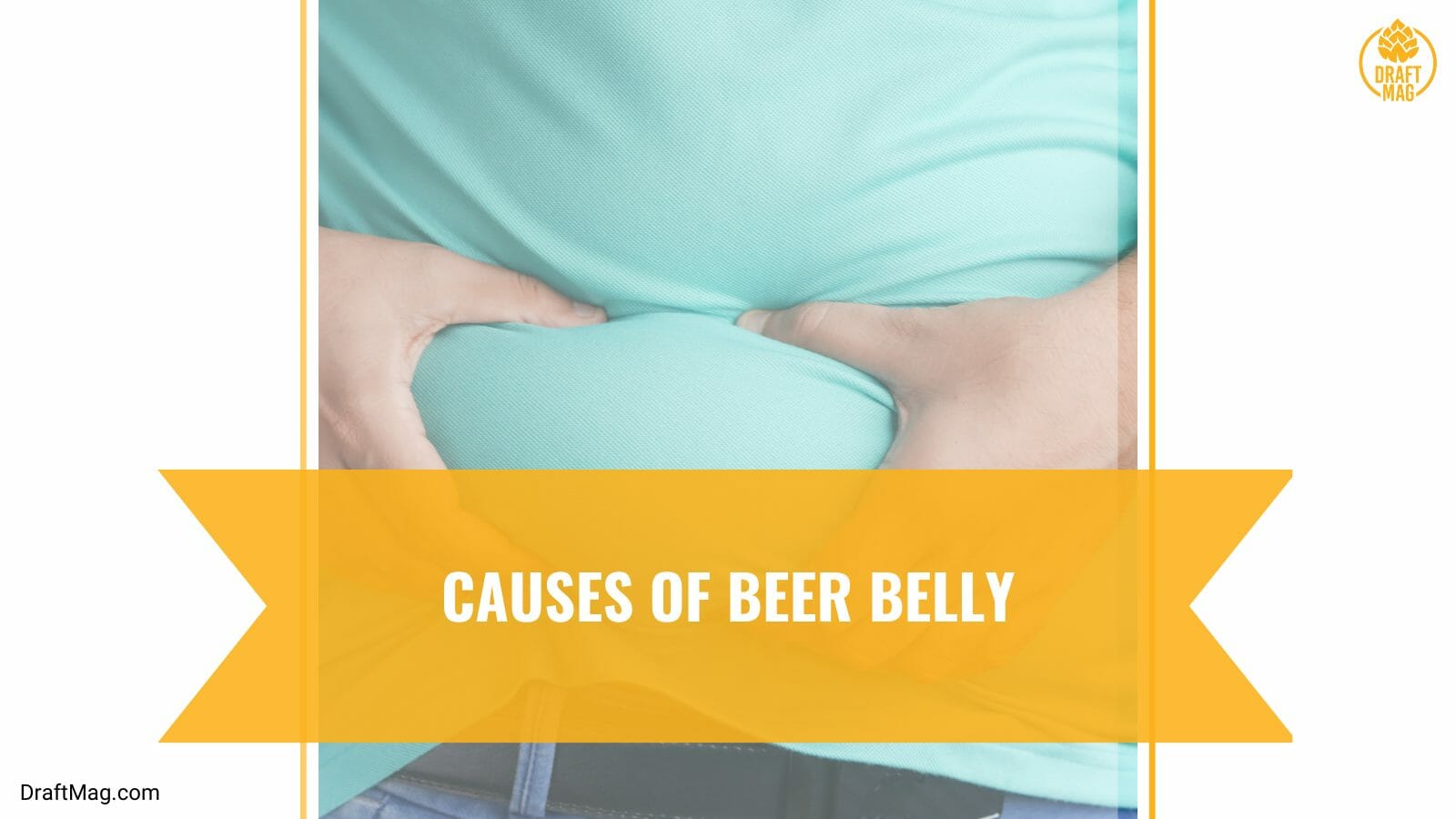
Too many calories, not calories from a single source, causes the belly to protrude. Any sort of calorie has the potential to develop belly fat, whether it comes from sugary drinks, alcohol, fried foods or sweets. Despite its moniker, “beer belly,” belly fat frequently results from a combination of poor practices.
Several factors influence stomach size, ranging from a bad diet and extra calories to a lack of physical activities and hormonal changes. In reality, beer (or alcohol generally) is not the main cause of this fat accumulation. Some of the beer belly causes include the following:
– Poor Nutrition
This comprises consuming an excessive amount of highly processed or sugary drinks and foods, including soda, cakes and many more. It also includes any diet wherein you consume more calories than you may need daily. Any alcoholic beverage adds calories to your diet and can quickly mount up.
– Insufficient Physical Activities
When you do not exercise, or you live a sedentary lifestyle, you tend to burn fewer calories. Too many calories in your body can cause weight gain, particularly around your belly.

This is why it is important to always stay fit and lead an active lifestyle as much as possible.
– High Levels of Stress
High stress levels can also lead to belly fat. Chronically elevated amounts of the stress hormone cortisol might lead you to retain additional fat around your stomach. This leads to what people call a beer belly.
– Inadequate Sleep
Poor sleep can lead to bad eating patterns, causing you to consume extra calories.

These additional calories contribute to the formation of visceral fat. In addition, not getting enough sleep causes you to lose focus and energy throughout the day.
– Age
Age also has a significant influence on stomach size. Beer bellies often become more evident as people age since they are less active and have lower calorie demands. This absence of physical activity and core strength, along with a high-calorie diet, facilitates weight growth. Furthermore, when people age, their hormone levels fall, making them more prone to accumulate extra fat in the stomach area.
Checking if You Have a Beer Belly
To check if you have a beer belly, try putting pressure on your stomach, measuring your waist circumference, and calculating your wasit-to-hip ratio (WHR). You might still have a beer belly even if you don’t drink beer, so a non-drinker is not immune to belly fat.
Remember, this is only a word beer enthusiasts use since it is assumed that their bellies are the consequence of beer intake. The truth is the concept of beer bellies is just an accumulation of visceral fat, which a variety of factors can cause.
Looking back, we indicated that various things might contribute to visceral fat. They include a bad diet, a lack of exercise, a lack of sleep and excessive levels of stress. These risk factors broaden the population of persons who can develop what is known as a beer belly.
There are numerous approaches you may take to check if you have excessive belly fat. Among these approaches are:
– Putting Pressure on Your Belly
Of course, many people will begin by pushing or caressing their stomachs to see if they are mushy or hard. The issue with this strategy is that there is no conventional way to distinguish between a bloated and a hard belly. If this is your first time, you may need to figure out what to feel or see.
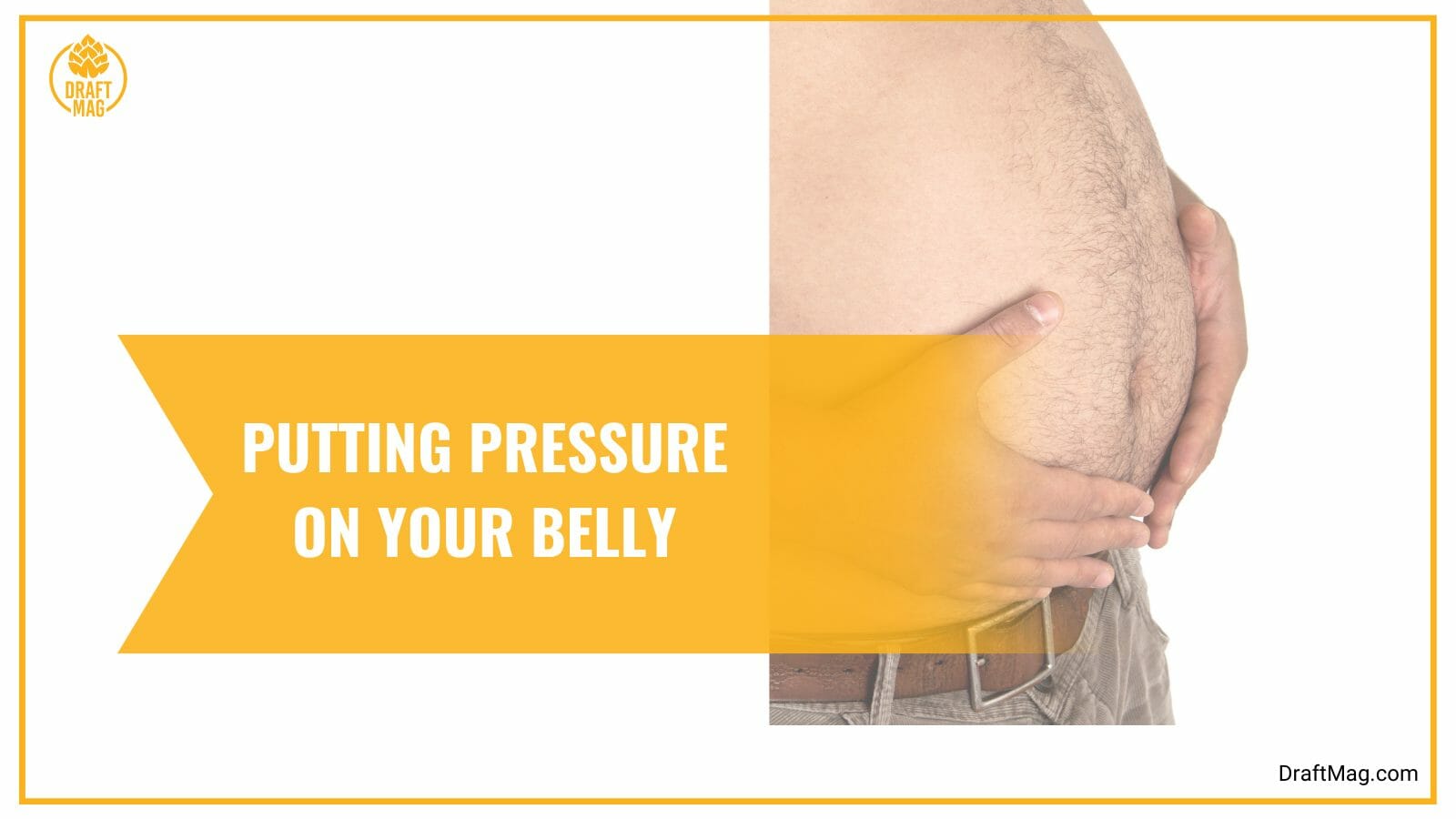
As a result, you may get wound up with inconclusive or erroneous approaches.
– Use the Waist Circumference
Excess visceral fat tends to accumulate not just in the stomach but also around the waist. You may measure your waist circumference to check how much visceral fat you have. A tape measure will come in handy here.
The healthy waist circumference range for non-pregnant women is 35 inches or less. The healthy range for men, on the other hand, is 40 inches or less. If your waist circumference is larger than this, you should take actionable steps to decrease the excess fat.
– Calculate Your Waist-to-Hip Ratio (WHR)
WHR is calculated by dividing your waist diameter by the circumference of your hip. This measurement is essential because it is one of the indicators of overall health. You only need a tape measure to get this value. Standing up, measure your waist and hips circumference. For more precise results, take these measurements immediately after exhaling.
Try not to tighten the tape over you since this may have undesirable outcomes. After taking these measures, you must compute the WHR. Simply divide your waist diameter by your hip circumference. Women have a healthy WHR of 0.85 or lower while a healthy man should not have a WHR of more than 0.9.
Top Tips to Avoid or Get Rid of a Beer Belly
To get rid of a beer belly, try limiting your alcohol consumption, exercising regularly, eating healthy food, getting an adequate amount of sleep, and asking for support. These are tried-and-tested methods to shrink belly fat, so make sure to stick to this regimen.
If your beer belly is affecting your self-esteem and how you feel in public, the great thing is that you can avoid and get rid of it. All of this is achievable because you may ensure proper weight loss. However, before we begin, there are some things you should know.
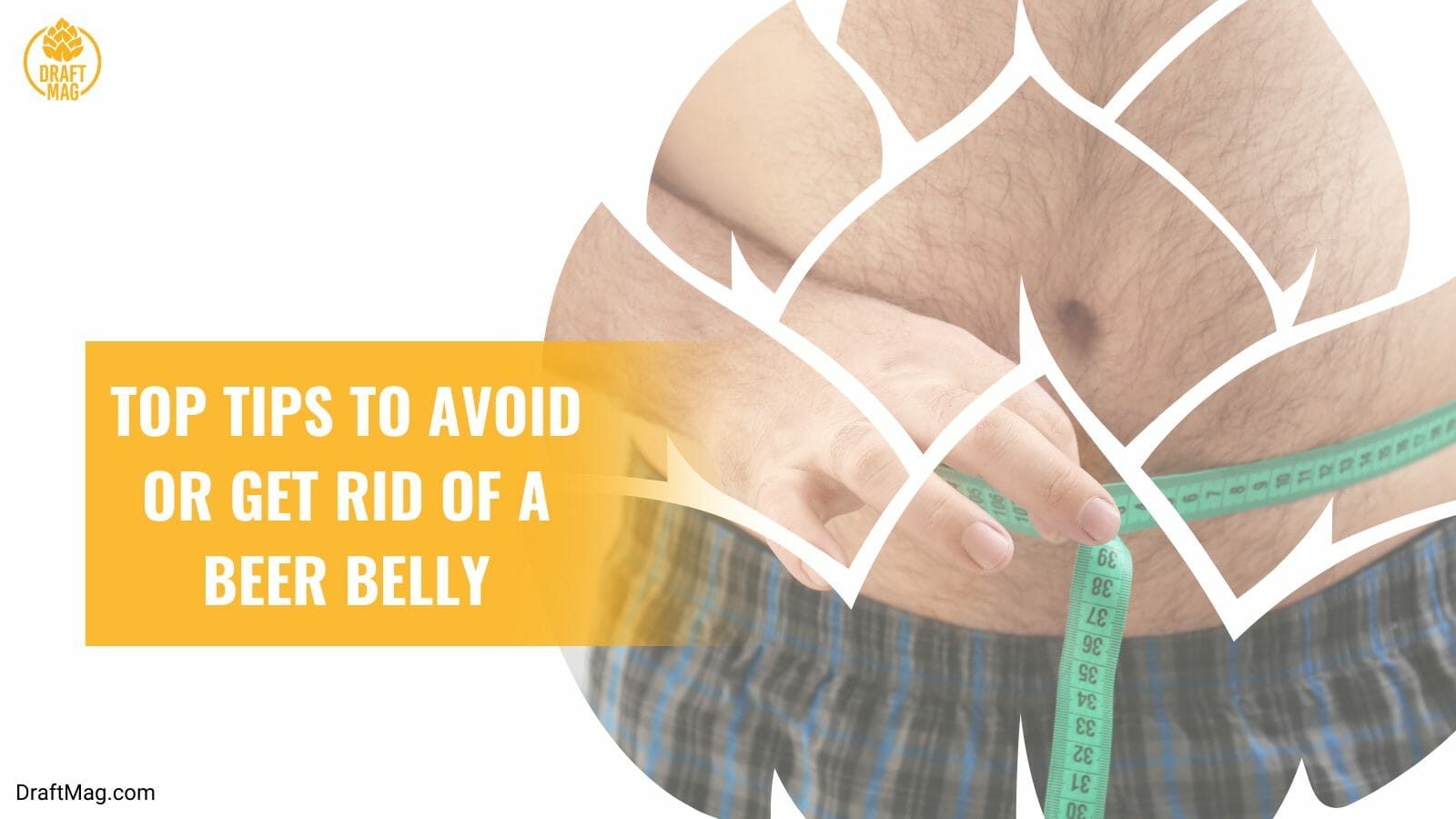
First, there is no magic medication or procedure to eliminate visceral fat, so forget about decreasing stomach fat in less than a week with a “special” drug or approach. Second, you can only lose belly fat by adopting a few lifestyle and nutritional modifications.
Third, before engaging in any of these activities, you must obtain permission from your doctor. With that being said, here are some strategies to lessen or avoid a beer belly:
– Limit Your Alcohol Consumption
Although many people may not like to hear it, the reality remains that alcohol is a major contributor to abdominal fat. As a result, you must restrict your consumption. A typical beer has about 150 calories. Let’s be honest about it. You will almost certainly consume more than one drink.
Excess calories from excessive alcohol intake cause a belly bulge, especially if you’re not physically active. Likewise, alcohol slows the fat-burning process because your liver prioritizes alcohol digestion. It can also induce weight gain, which many people will notice within a few weeks. Others, on the other hand, may notice weight fluctuations later.
All of these reasons only help to explain why you develop a hangover after consuming alcohol. We do not advise you to stop drinking. Instead, we simply state that moderation is essential when it comes to alcohol consumption.
– Exercise Regularly
You’re going to need to sweat away your belly fat. However, it does not imply that you should torture yourself with thousands of crunches. You may lose weight and belly fat by developing an exercise routine tailored to your fitness level and ability.

It does not have to belong to something other than a certain workout category. You may shrink your beer belly by undertaking aerobic and cardio activities and lifting weights.
It indicates that basic exercises such as walking, jogging, running, or cycling can help you lose visceral fat. The key is to devise a workable plan that allows safe and slow weight loss while continuing to exercise.
– Eat Healthy and Balanced Diets
You will also be able to prevent or avoid visceral fat accumulation by eating healthy meals. Whole grains, healthy fats, lean proteins, fruits and leafy green vegetables should be prioritized.
Likewise, choose low-calorie foods over sugary, processed junk. Fiber provides several health advantages, including lowering the risk of chronic illnesses connected with a beer belly such as cardiovascular disease and type II diabetes.
Furthermore, fiber-rich meals such as fruits and vegetables are full, low-calorie alternatives that do not contribute to the building belly fat. Women should consume 25 grams of fiber daily, while men should consume 38 grams. Consider discussing your eating habits with a qualified dietician.
– Get Adequate Sleep
As previously stated, a lack of sufficient sleep contributes to visceral fat accumulation. You may prevent this accumulation by getting enough rest. If you stay up drinking until late, your belly fat issue may worsen.

Try to get the necessary seven to nine hours of sleep every night. If you’re having difficulties sleeping, consider creating a nightly ritual, using white noise, and adopting relaxation techniques.
– Get Support
Hanging out with health-conscious pals can help you quit excessive drinking, maintain good eating habits, and stay accountable for your exercise. If your friends are eating healthier and exercising more, you may be tempted to do the same, so try to locate a group that supports a healthy lifestyle.
Conclusion
A beer belly occurs due to an excessive buildup of visceral fat caused due to many factors. We have covered this concept extensively in this article; here’s a recap:
- A beer belly refers to fat deposits around the belly and waistline region. It can come in the form of visceral fat or subcutaneous fat.
- Several factors influence stomach size, ranging from a bad diet and extra calories to a lack of exercise and hormonal changes.
- Excess belly fat may predispose individuals to many health issues, including diabetes, cardiovascular disease, asthma, dementia, prostate and breast conditions.
- You can check for excess belly fat by pressing your belly, checking waist circumference and calculating WHR.
- The best tips and tricks on how to get rid of beer belly are to limit your alcohol consumption, exercise regularly, practice healthy eating, get proper sleep and be with a support group.
Following the good practices and strategies and living a healthy life, as discussed in this guide, will help you avoid a beer belly and remain fit and active.

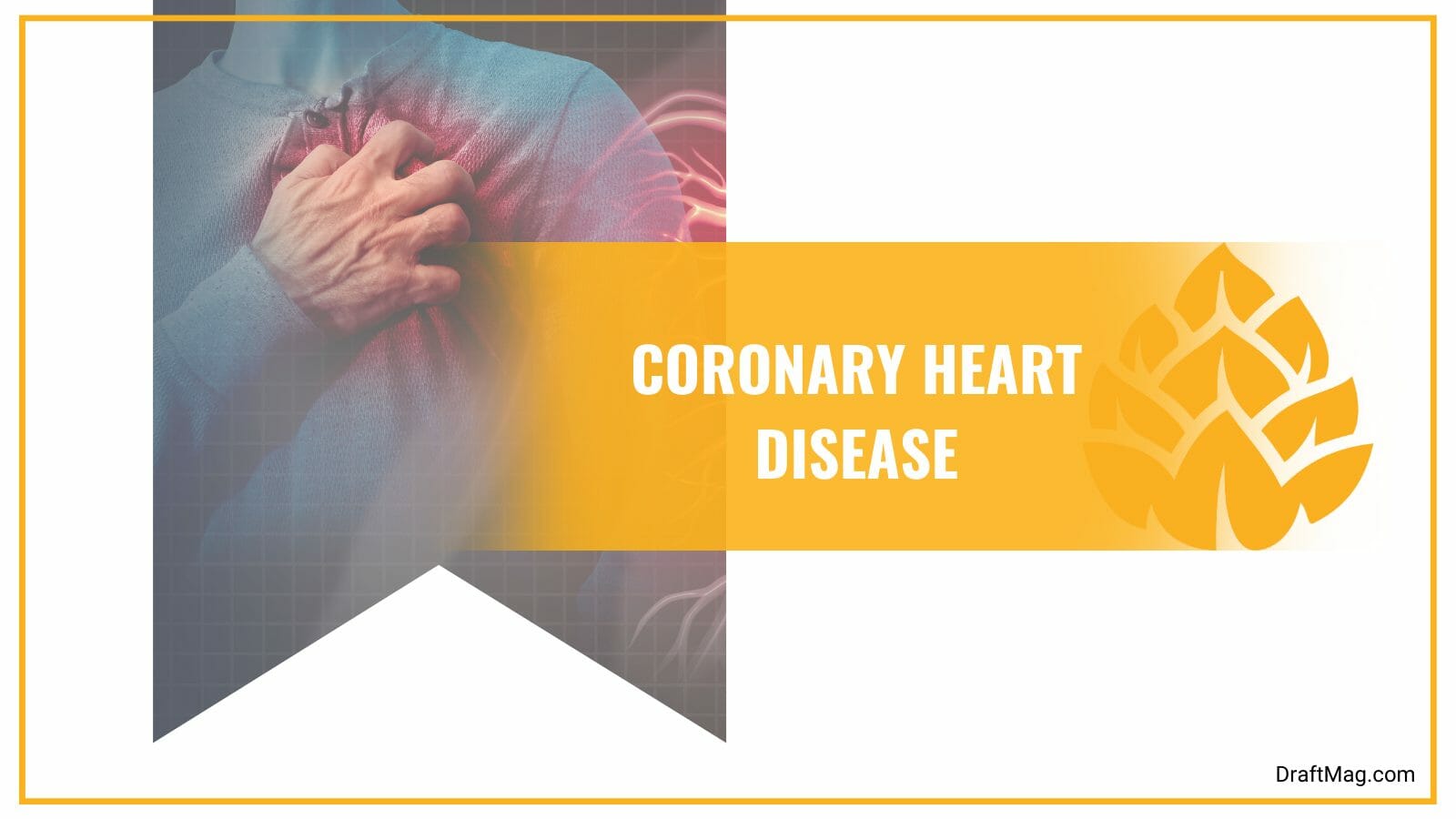 Excess plaque can cause the arteries to be hardened and constricted, reducing blood flow and causing cardiac disease.
Excess plaque can cause the arteries to be hardened and constricted, reducing blood flow and causing cardiac disease.


